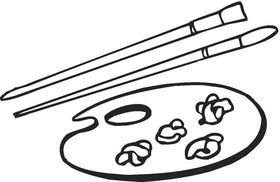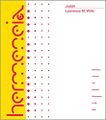Difference between revisions of "Category:Judith (subject)"
| Line 5: | Line 5: | ||
{{WindowMain | {{WindowMain | ||
|title= [[People]] -> | |title= [[People]] -> Judith (Home Page) | ||
|backgroundLogo= Bluebg_rounded_croped.png | |backgroundLogo= Bluebg_rounded_croped.png | ||
|logo= Logo.png | |logo= Logo.png | ||
Revision as of 16:36, 28 December 2015
|
Judith -- Overview According to the book of Judith, Judith was a wealthy and beautiful widow, who freed her people by killing Nebuchadnezzar's general Holofernes who was about to invade the land of Israel. Gabriele Boccaccini, University of Michigan (June 2010) According to the book of Judith, Judith was a wealthy and beautiful widow, who freed her people by killing Nebuchadnezzar's general Holofernes who was about to invade the land of Israel. Judith in scholarship =
Judith is a literary character. Scholarly research have focused either on the study of the character in her original literary context (see Book of Judith), or on the study of the Judith tradition over the centuries (see in particular Judith, Sexual Warrior (1998 Stocker), book, and The Sword of Judith (2010 Brine / Ciletti / Lähnemann), edited volume). The suggestion that Judith could be a fictional counterpart of the Hasmonean Queen Salome Alexandra, facing the invasion of the Armenian King Tigranes the Great would give some historical relevance to the character. Judith in literature and the arts
Judith enjoyed an extraordinary success in Christian iconography, especially in the period of the Counter-Reformation, as a symbol of the inviolability and invincibility of the Church. What made the subject so appealing to artists and audience, however, was not as much its theological meaning but rather the opportunity it offered to portray a heroine in which beauty and strength were united. Judith was usually depicted in the act of beheading Holofernes, or triumphant with the sword and the head of Holofernes, often in company with her maidservant, by artists such as Titian, Caravaggio, Valentin de Boulogne, and many others. In the 19th century, Judith as other biblical heroines underwent her transformation into an Oriental beauty. The result was that her character became more and more similar to, and competing with, that of Salome. By the early 20th century, Salome replaced Judith as the most popular Biblical heroine, by taking up most of her features and adding that touch of youthful perversion that the pious widow Judith could not have. Related categoriesExternal links
Judith -- Highlights
Judith -- Sources References to Judith are limited exclusively to the Book of Judith. |
|
Pages in category "Judith (subject)"
The following 200 pages are in this category, out of 210 total.
(previous page) (next page)1
- Judith and Holofernes (1460 Donatello), art
- Judith and Holophernes (1472 Botticelli), art
- Storie sacre (Sacred Narratives / 1475c Tornabuoni), poetry
- Judith and Holophernes (1495 Mantegna), art
- Judith (1504 Giorgione), art
- Judith and Holofernes (1509 Michelangelo), art
- Judith (1510 Beccafumi), art
- Judita (Judith / 1521 Marulić), poetry (Croatian)
- Judith (1525 Catena), art
- Judith (1525 Palmezzano), art
- Judith (1525 Vermeyen), art
- Judith (1530 Cranach), art
- Iudith (1532 Birck), play
- Judith (1540 Hemessen), art
- Judith (1550 Cranach), art
- Judith (1550 Sustris), art
- Judith mit Holophernes (1551 Sachs), play
- Judith Beheading Holofernes (1554 Vasari), art
- La gloriosa e trionfante vittoria donata dal grande Iddio al popolo hebreo per mezzo di Giuditta sua fidelissima serva (1564 Sacchetti), play
- Judith (1570 Matsijs), art
- Judith (1570 Titian), art
- Judith Beheading Holofernes (1578 Tintoretto), art
- Judith and the Head of Holofernes (1580 Veronese), art
- Judit (Judith / 1584 Du Bartas), poetry
- Judith (1585 Ramey), art
- Oloferne (1594 Alberti), play
- Imitation de la victoire de Judich (Imitation of the Victory of Judith / 1594 Coignard), poetry
- Judith (1595 Carracci), art
- Judith with the Head of Holofernes (1596 Galizia), art
- Judith Beheading Holofernes (1599 Caravaggio), art
- Judith with the Head of Holofernes (1600 Fontana), art
- Giudetta (1602 Lottini), play
- Judith Beheading Holofernes (1603 Elsheimer), art
- Judith Beheading Holofernes (1608 Baglione), art
- Judith (1610 Cesari), art
- In sacros divinorvm Bibliorvm libros, Tobiam, Ivdith, Esther, Machabaeos, commentarius (1610 Serarius), book
- Judith with the Head of Holofernes (1613 Allori), art
- Judith and Her Maidservant (1614 Gentileschi), art
- Judith Beheading Holofernes (1615-20 Gentileschi), art
- Judith (1615 Saraceni), art
- Judith (1616 Rubens), art
- Judith Beheading Holofernes (1620 Guerrieri), art
- Judith Beheading Holofernes (1622 Liss), art
- Judith and Her Maidservant with the Head of Holofernes (1625 Gentileschi), art
- Judith Beheading Holofernes (1625 Grammatica), art
- Judith Beheading Holofernes (1626 Valentin), art
- Judith (1627 Blasset), art
- Iudit (1628 Della Valle), play
- Judith (1628 Valentin), art
- Judith (1635 Stanzione), art
- Judith Beheading Holofernes (1636 Furini), art
- Judith Beheading Holofernes (1659 Bray), art
- Dialogus de Judith et Holoferne (1667 Förster), oratorio
- La Giuditta (Judith / 1668 Cazzati), oratorio
- La Giuditta (Judith / 1668 Draghi), oratorio
- Judith; sive, Bethulia liberata (1670 Charpentier), oratorio
- La Giuditta (Judith / 1686 Ziani), oratorio
- Female Excellency; or, The Ladies Glory (1688 Burton), book
- Bettuglia liberata (1690 Colonna / Bergamori), oratorio
- La verité de l'histoire de Judith (1690 Montfaucon), book
- Liber Tobiae, Judith, Oratio Manassae, Sapientia, et Ecclesiasticus Graecè et Latine (OT Apocrypha / 1691 Fabricius), book
- La Giuditta, "Rome version" (1693 Scarlatti / Ottoboni), oratorio
- La Giuditta, "Cambridge version" (1697 Scarlatti / Ottoboni), oratorio
- La Giuditta (1701 Lotti), oratorio
- The Discovery of the Body of Holofernes (1703 Giordano), art
- Judith Displaying the Head of Holofernes (1704 Giordano), art
- La Giuditta (Judith / 1706 Buonaccorsi), oratorio
- Judith (1708 Jacquet de La Guerre), oratorio
- La Giuditta (1710 Badia / Stampiglia), oratorio
- Juditha triumphans (1716 Vivaldi / Cassetti), oratorio
- La Giuditta (1717 Arresti), oratorio
- Il trionfo di Giuditta (1723 Porsile / Maddali), oratorio
- La Giuditta (1726 Almeida), oratorio
- Judith (1726 Dijk), art
- Judith (1733 Fesch / Huggins), oratorio
- Judith Displaying the Head of Holofernes (1733 Solimena), art
- (++) La Betulia liberata (The Liberation of Bethulia / 1734 Metastasio), libretto
- La Valiente Judith (The Brave Judith / 1734 Picanyol), oratorio
- La Betulia liberata (The Liberation of Bethulia / 1734 Reutter / @1734 Metastasio), oratorio (music), Vienna premiere
- La Giuditta (Judith / 1735 Wassmuth), oratorio
- La Betulia liberata (The Liberation of Bethulia / 1737 Leoni / @1734 Metastasio), oratorio (music), Genoa premiere
- La Betulia liberata (The Liberation of Bethulia / 1738 Bernasconi / @1734 Metastasio), oratorio (music), Vienna premiere
- La Triunfante Judith (Judith Triumphant / 1742 Figuera), oratorio
- La Betulia liberata (The Liberation of Bethulia / 1743 Jommelli / @1734 Metastasio), oratorio (music), Venice premiere
- La Betulia liberata (The Liberation of Bethulia / 1743 Redi / @1734 Metastasio), oratorio (music), Florence premiere
- Judith and Holofernes (1745 Piazzetta), art
- La Betulia liberata (The Liberation of Bethulia / 1746 Angelini / @1734 Metastasio), oratorio (music), Perugia premiere
- La Betulia liberata (The Liberation of Bethulia / 1746 Cafaro / @1734 Metastasio), oratorio (music), Naples premiere
- Judith (1746 Galuppi), oratorio
- La Betulia liberata (The Liberation of Bethulia / 1747 Ciampi / @1734 Metastasio), oratorio (music), Venice premiere
- Giuditta (Judith / 1753 Costanzi), oratorio
- Betulia liberata (The Liberation of Bethulia / 1756 Aurisicchio / @1734 Metastasio), oratorio (music), Rome premiere
- Triumphus Judith (1757 Pampani), oratorio)
- La Betulia liberata (The Liberation of Bethulia / 1760 Holzbauer / @1734 Metastasio), oratorio
- Judith (1761 Arne / Bickerstaffe), oratorio
- La Betulia liberata (The Liberation of Bethulia / 1767 Ricci / @1734 Metastasio), oratorio (music), Ascoli premiere
- Colección de varias historias (1767-1768 Santos Alonso), novel
- La Betulia liberata (The Liberation of Bethulia / 1768 Scolari / @1734 Metastasio), oratorio (music), Lisbon premiere
- La Betulia liberata (The Liberation of Bethulia / 1771 Calegari / @1734 Metastasio), oratorio (music), Padua premiere
- (++) La Betulia liberata (The Liberation of Bethulia / 1771 Mozart / @1734 Metastasio), oratorio
- La Betulia liberata (The Liberation of Bethulia / 1771 Myslivecek / @ 1734 Metastasio), oratorio (music), Padua premiere
- La Betulia liberata (The Liberation of Bethulia / 1772 Gassmann / @1734 Metastasio), oratorio (music), Vienna premiere
- La Betulia liberata (The Liberation of Bethulia / 1774 Corri / @1734 Metastasio), oratorio (music), Edinburgh premiere
- La Betulia liberata (The Liberation of Bethulia / 1774 Seydelmann / @1734 Metastasio), oratorio (music), Dresden premiere
- Judith; seu, Bethuliae ab obsidione liberatio (1775 Manna), oratorio
- La Betulia liberata (The Liberation of Bethulia / 1776 Almerici / @1734 Metastasio), oratorio (music), Pesaro premiere
- Betulia liberata (The Liberation of Bethulia / 1777 Pio / @1734 Metastasio), oratorio
- La Betulia liberata (The Liberation of Bethulia / 1780 Alessandri / @1734 Metastasio), oratorio (music), Venice premiere
- Judith seu Bethuliae liberatio = La Betulia liberata, Latin ed. (The Liberation of Bethulia / 1780 Sala / @1734 Metastasio), oratorio (music), Naples premiere
- La Betulia liberata (1781 Anfossi / Metastasio), oratorio
- La Betulia liberata (1781 Morosini / Metastasio), oratorio
- Giuditta (1782 Cimarosa / Bagnoli), oratorio
- La Betulia liberata (The Liberation of Bethulia / 1790 Furlanetto / @1734 Metastasio), oratorio (music), Venice premiere
- La morte di Oloferne (1791 Guglielmi / Metastasio), oratorio
- Betulia liberata (1796 Schuster / Metastasio), oratorio
- Megillat Yehudit (1799 Ben Ze'ev), book
- Betulia liberata (1805 Naumann / Metastasio), oratorio
- Judith and Holophernes (1823 Goya), art
- Judith (1825 Decomberousse), play
- Giuditta (Judith / 1827 Raimondi / Tottola), opera (music & libretto)
- Giuditta (Judith / 1840 Levi / Peruzzini), opera (music & libretto), Venice premiere
- Judith (1841 Eckert / Förster), oratorio
- Judith (1840 Hebbel), play
- Judith (1841 Riedel), art
- Judith (1843 Girardin), play
- Giuditta (Judith / 1852 Pacini / Abate), oratorio
- Giuditta (Judith / 1854 Cianchi / @1840 Peruzzini), opera (music), Florence premiere
- Giuditta (1857 Giacometti), play
- Giuditta (Judith / 1860 Peri / Marcello), opera
- Юдифь (Judith / 1863 Serov), opera
- Judith (1868 Szemler), art
- Judith (1876 Lefebvre / Collin), oratorio
- Judith (1880 Américo), art
- Judith (1885 Bradford), oratorio
- Judith (1885 Constant), art
- Judith and Holofernes (1886 Lematte), art
- Commentar zum Buche Judith (1887 Scholz), book
- Judith; or, The Regeneration of Manasseh (1888 Parry), oratorio
- Judith (1890 Varma), art
- Some Jewish Women (1892 Zirndorf), book
- Ouverture zu Hebbel's "Judith" (Overture to Hebbel's "Judith" / 1894 Bölsche), theatre music
- Salome/Judith (1895 Mackennal), art
- Judith (1901 Chadwick / Langdon), opera
- Judith (1901 Klughardt / Gerlach), oratorio
- Judith and Holofernes (1902 Klimt), art
- Tobit and the Babylonian Apocryphal Writings (1903 Sayce), book
- Judith of Bethulia (1904 Aldrich), play
- Judith Triumphant (1905 Buchanan), novel
- Giuditta e Oloferne (Judith and Holophernes / 1907 Caserini), short film
- Judith et Holopherne (Judith and Holophernes / 1908 Feuillade), short film
- Judith (1910 Schütze), play
- Die jüdische Witwe (The Jewish Widow / 1911 Kaiser), play
- Judith (1912 Furlotti / Bettoli), oratorio
- Judith Beheading Holofernes (1916 Moser), art
- Judith (1919 Bennett), play
- Giuditta e Oloferne (1920 Damerini), play
- Giuditta e Oloferne (Judith and Holophernes / 1920 Molinari), feature film
- Judith (1922 Bernstein), play
- Judith (1922 Le Borne), music
- Júdith (1923 Hofmeister), novel
- Judith (1925 Honegger / Morax), opera
- Judith Beheading Holofernes (1927 Stuck), art
- Judith (1929 Goossens / @1919 Bennett), opera (music & libretto)
- Giuditta e Oloferne (Judith and Holophernes / 1929 Negroni), feature film
- Judith (1931 Giraudoux), play
- Judith (1931 Jouvet / @1931 Giraudoux), Paris production, world premiere (play)
- Giuditta (1937 Honegger / Savagnone), opera (Italian ed.)
- Judith (1940 Abell), play
- La Betulia liberata (The Liberation of Bethulia / 1952 Rossi / @1771 Mozart), sound recording (oratorio)
- Giuditta e Oloferne (Head of a Tyrant / 1959 Cerchio), feature film
- The Story of Judith (1960 Leisen), TV film
- Judith, Spanish ed. (1961 Stivel / @1840 Hebbel), TV production (play)
- Judith, English ed. (1962 Clurman / @1931 Giraudoux), London production (play)
- Judith, German ed. (1965 Döpke / @1931 Giraudoux), TV production (play)
- Judith, English ed. (1965 Rabb / @1931 Giraudoux), New York production (play)
- Judith (1966 Haaf / @1840 Hebbel), TV production (play)
- Giuditta (Judith / 1967 Vaccari / @1840 Hebbel), TV production (play)
- La Betulia liberata (The Liberation of Bethulia / 1968 Cillario / @1771 Mozart), sound recording (oratorio)
- Judith, French ed. (1969 Maurice / @1840 Hebbel), TV production (play)
- Judith (1969 Wilchek), novel
- Der Engel, die Frauen, das Heil: Tobias, Ester, Judit (1970 Dommershausen), book
- Judith, Spanish ed. (1970 Páramo / @1840 Hebbel), TV production (play)
- La Betulia liberata (The Liberation of Bethulia / 1976 Negri / @1771 Mozart), sound recording (oratorio)
- La Betulia liberata (The Liberation of Bethulia / 1978 Hager / @1771 Mozart), sound recording (oratorio)
- Judith, Spanish ed. (1979 Castellón / @1931 Giraudoux), TV production (play)
- The Dinner Party (1979 Chicago), art
- Judita = Judith, Croatian ed. (1980 Caric / @1840 Hebbel), TV production (play)
- Esther, Judith, Tobit, Jonah, Ruth (1982 Craghan), book
- Judith (1984 Hochhuth), play
- Judith (1985 Matthus / Hebbel), opera
- Jonah, Tobit, Judith (1986 Nowell), book
- Tobit, Judit (1987 Gross), book
- Dispetti divini (1989 Alberti), novel
- Judith: A Parting from the Body (1990 Barker), play
- The Feminine Unconventional: Four Subversive Figures in Israel's Tradition (1990 Lacocque), book
- La Betulia liberata (The Liberation of Bethulia / 1991 Maag / @1771 Mozart), sound recording (oratorio)
- No One Spoke Ill of Her: Essays on Judith (1992 VanderKam), edited volume
- La stella di Giuditta (1994 Venturoli), novel
- Das Buch Judit (1995 Haag), book
- The Jewish Novel in the Ancient World (1995 Wills), book
Media in category "Judith (subject)"
The following 6 files are in this category, out of 6 total.
- 1914 Griffith (film).jpg 312 × 445; 25 KB
- 1986 Dijkstra.jpg 350 × 499; 38 KB
- 1998 Stocker.jpg 339 × 499; 28 KB
- 2010-E Brine.jpg 333 × 499; 34 KB
- 2012-E Xeravits.jpg 339 × 499; 18 KB
- 2019 Wills.jpg 440 × 500; 24 KB










